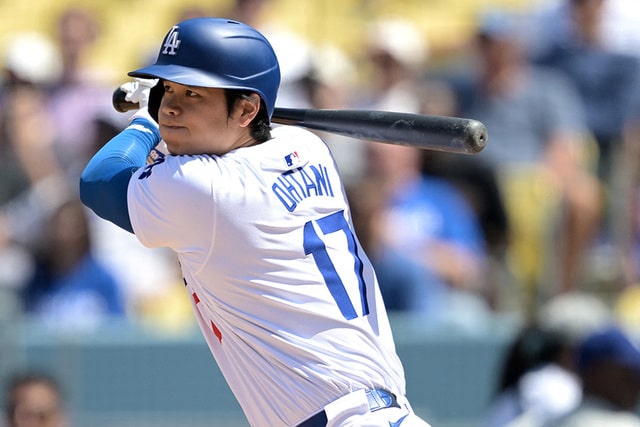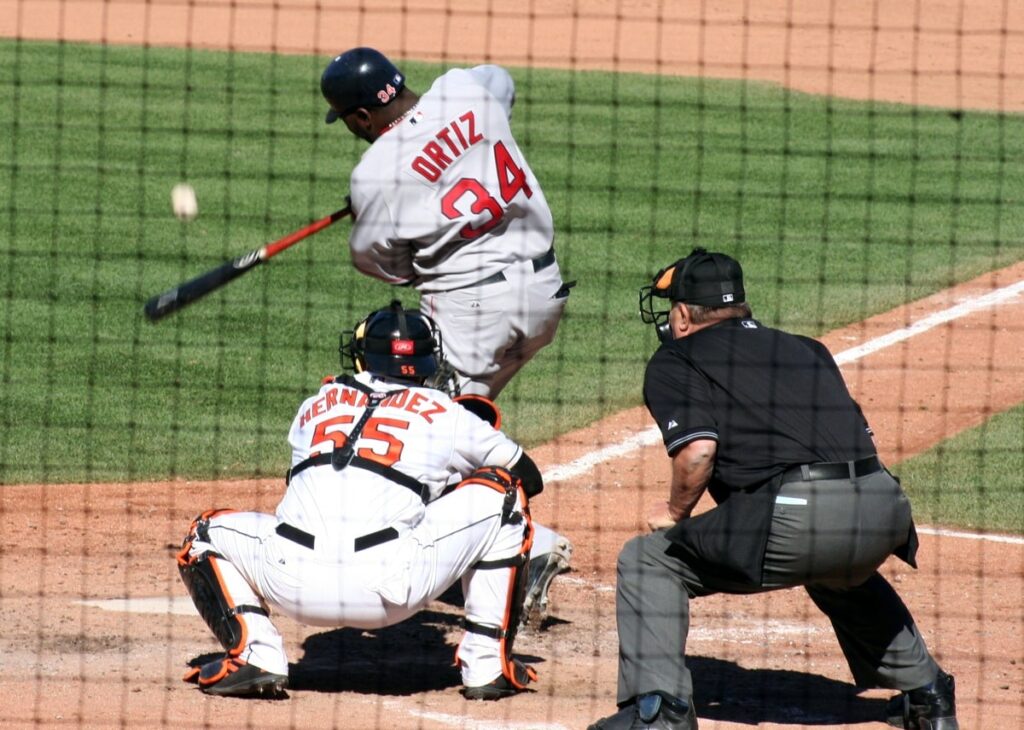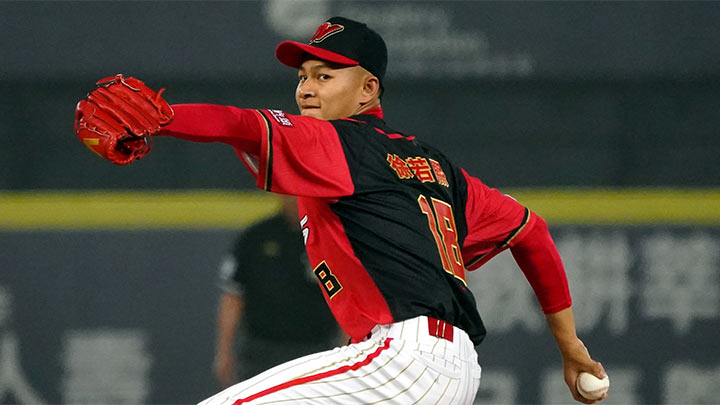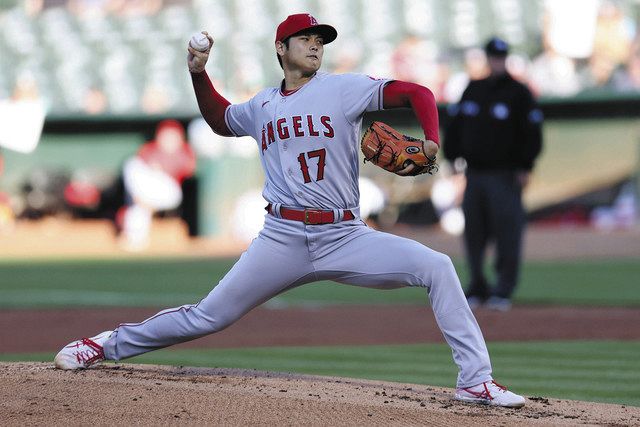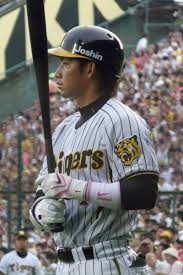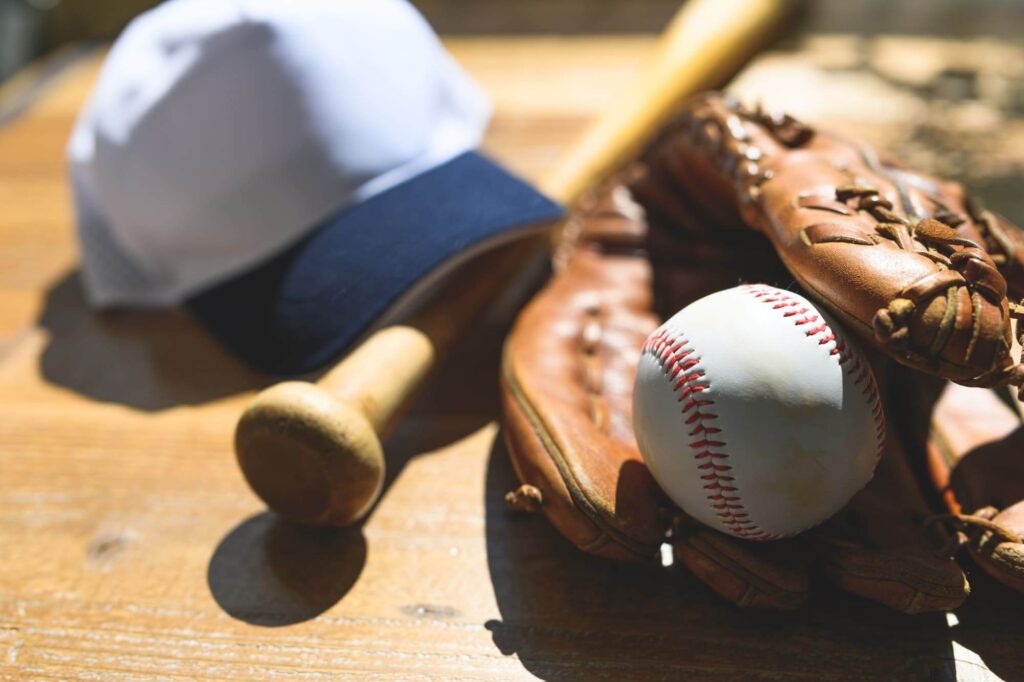![When did baseball helmets start to have face guards? [Detailed explanation]](https://planotatico.com/wp-content/uploads/2024/06/herummettofacegard-min.jpg)
In baseball, helmets are an essential piece of equipment to keep players safe.
However, in recent years, helmets equipped with face guards have started to become more popular.
This article takes a closer look at when helmets with face guards should be introduced and their importance.
目次
- 1 Background to the introduction of helmets with face guards
- 2 The history of baseball helmets
- 3 When will helmets with face guards become more common?
- 4 Effectiveness and safety of face guards
- 5 Face Helmet Rules and Guidelines
- 6 Face guard design and function
- 7 How to choose a helmet with a face guard
- 8 Conclusion
Background to the introduction of helmets with face guards
Helmets play an important role in keeping players safe in baseball.
However, with the increasing incidence of injuries, especially to the face, there are an increasing number of situations in which helmets alone are not enough.
Against this background, the introduction of helmets with face guards has begun.
What prompted the introduction of face guards?
The introduction of helmets with face guards was prompted by a number of serious facial injuries suffered by players.
In particular, there have been reported cases where players have been hit directly in the face by high-speed balls thrown by the pitcher, resulting in serious injuries.
Such accidents can have a serious impact on an athlete’s career and can even be life-threatening.
For example, in Major League Baseball (MLB), there have been several players who have been hit in the face by a ball and suffered serious injuries.
In response to this, MLB urgently needed to take measures to ensure the safety of players, and began introducing helmets with face guards.
This movement influenced other professional sports leagues and amateur baseball, becoming the catalyst for its widespread popularity.
Another factor behind their introduction is technological advances that have led to the development of face guards that are lightweight yet provide high levels of protection.
This has made it possible to improve safety without causing any inconvenience to players while playing.
Initial safety measures and their limitations
Early baseball helmets focused on protecting the head.
However, little consideration was given to facial protection.
Early helmets were designed to be lightweight and comfortable to wear, but offered limited protection for the face.
As a result, when a player is hit directly in the face by the ball, he or she often suffers serious injuries, which can be a threat to the player’s career.
The lack of face protection was a particular problem for pitchers and catchers.
When pitching or batting at high speed, there was a high risk of the ball moving unpredictably and hitting the player directly in the face.
Against this background, it became clear that the safety measures provided by early helmets had limitations, and there was a strong recognition of the need for face protection.
The introduction of face guards was an important step in solving this problem.
Face guards have dramatically improved player safety by preventing direct impacts to the face.
Furthermore, the introduction of face guards has given players a sense of mental security, allowing them to concentrate on playing.
Improved safety has a positive effect on player performance, so helmets with face guards have become essential equipment in modern baseball.

The history of baseball helmets
Throughout the history of baseball, helmets have evolved as an important piece of equipment to protect players’ safety.
Early helmets were very simple compared to modern helmets, and were limited in materials and designs.
However, with the passage of time and advances in technology, they have evolved in pursuit of safety and comfort.
Early helmets and their evolution
The first baseball helmets appeared in the 1930s, initially consisting of simple cloth or leather caps to protect the head.
These early helmets offered little protection by today’s standards and could not protect against direct impacts to the head.
In the 1950s, plastic helmets came on the scene, which marked a major turning point in the evolution of baseball helmets.
Plastic helmets are lightweight yet impact resistant, providing more effective protection for players’ heads.
During this time, Major League Baseball (MLB) also began to require the use of helmets.
Throughout the 1960s and 1970s, helmet design evolved further, with the addition of internal padding.
This padding acts as a shock absorber, reducing injury to the player’s head.
Ear protection flaps have also been added to provide more all-around protection.
Changes in helmet materials and designs
Helmet materials and designs have changed significantly over the years.
The move from early cloth or leather caps to plastic was a big evolution, but further improvements continued after that.
Since the 1980s, synthetic resins and composite materials have been used in helmet manufacturing.
These materials are extremely lightweight yet highly impact resistant, significantly improving player safety.
Modern helmets use advanced materials such as reinforced plastics and carbon fibre to provide exceptional protection.
Many improvements have also been made to the design, such as the inclusion of ventilation holes to ensure breathability, making the hats more comfortable to wear for long periods of time.
The inner padding has also been improved and is now designed to disperse shock by supporting the entire head evenly.
Furthermore, helmets equipped with face guards have become more common in recent years.
Face guards are designed to prevent direct impacts to the face, further enhancing player safety.
Face guards are becoming increasingly important, especially in modern baseball, where balls are flying at high speeds.
In this way, baseball helmets have evolved in both materials and design.
Improvements continue to be made with player safety as the top priority, creating an environment where many players can concentrate on playing with peace of mind.
The evolution of helmets is an essential element in the development of the sport of baseball, and further improvements are expected to continue in the future.
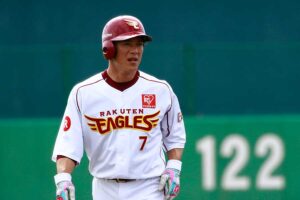
When will helmets with face guards become more common?
The widespread use of helmets with face guards was an important step in increasing player safety.
To prevent injuries, especially to the face, many leagues have introduced helmets with face guards.
Below, we will take a detailed look at when the ball became popular in Major League Baseball (MLB) and Nippon Professional Baseball (NPB).
When will it be introduced in Major League Baseball (MLB)?
MLB has taken steps to prioritize player safety.
The introduction of helmets with face guards began in earnest in the late 2000s and early 2010s.
In particular, since the 2010s, several serious accidents have prompted the introduction of face guards.
One example is the injury suffered by Tampa Bay Rays pitcher Alex Cobb in 2013 after he was hit in the face by a liner.
In response to this incident, MLB reevaluated player safety and began recommending the use of helmets with face guards.
In particular, for pitchers and batters, face guards have become an important piece of equipment to prevent serious facial injuries.
MLB also worked with helmet manufacturers to develop a lightweight, durable helmet with a face guard.
This has been designed to ensure a comfortable fit and good visibility so that players can wear the glasses comfortably while playing.
Currently, many MLB players use helmets with face guards, and their safety is widely recognized.
Popularity in Nippon Professional Baseball (NPB)
The spread of helmets with face guards is also an important theme in Nippon Professional Baseball (NPB).
The introduction of helmets with face guards in NPB was initiated under the influence of MLB.
In the NPB, the use of helmets with face guards began to increase in the mid-2010s.
In particular, in 2016, Yomiuri Giants player Hayato Sakamoto became a hot topic when he started using a helmet with a face guard.
Thanks to Sakamoto’s influence, the use of helmets with face guards spread to other athletes as well.
Additionally, within the NPB, the players’ association is taking the lead in carrying out activities to improve safety.
To ensure the safety of players, the Players’ Association is working with helmet manufacturers to promote the development and popularization of new models.
As a result, the quality of helmets with face guards has improved and their use among players has also increased.
In addition, NPB is moving towards introducing helmets with face guards, especially for young players.
This creates a safer environment for the next generation of players to play.
In particular, the use of helmets with face guards is recommended and is widely used in junior leagues and amateur baseball.
In this way, MLB and NPB have begun to introduce helmets with face guards, greatly improving player safety.
Efforts to improve safety will continue, and it is expected that even more athletes will use helmets with face guards.
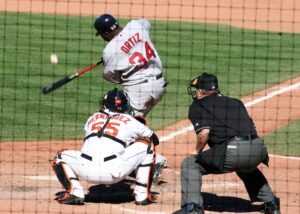
Effectiveness and safety of face guards
Helmets with face guards were introduced in baseball to provide face protection for players and greatly improve safety.
Face guards help prevent injuries to players, especially by blocking direct hits to the face.
In this section, we’ll take a closer look at the effectiveness of face guards and why they’re important.
Face protection for athletes and its importance
During a baseball game, pitchers and batters face balls flying at high speeds.
If a ball hits you in the face, it can cause serious injuries including broken bones, vision loss and even death.
For this reason, face protection is crucial to ensuring player safety.
Helmets with face guards are designed to reduce these risks.
The face guard covers the entire face and protects it from direct hits from the ball.
This protects vulnerable areas of the face, such as the nose, chin, cheekbones, and around the eyes.
Face guards also improve players’ sense of psychological safety.
By reducing the fear of hitting their face, players can concentrate more easily on their game, which leads to improved performance.
Especially for young players and those aspiring to become professionals, helmets with face guards are an important piece of equipment that allows them to play with peace of mind.
Effectiveness of face guards as seen in actual cases
Concrete examples that demonstrate the effectiveness of helmets with face guards include their use in Major League Baseball (MLB) and Nippon Professional Baseball (NPB).
In these leagues, the introduction of face guards has dramatically reduced player injuries.
For example, in 2014, MLB pitcher Michael Waqa was hit in the face by a ball.
This accident prompted MLB to begin introducing helmets with face guards.
As a result, many players have started using face guards, which has significantly reduced the risk of facial injuries.
Similar effects have also been reported in the NPB. The importance of face guards was reaffirmed after a Yomiuri Giants player was hit in the face by a ball in 2018, resulting in a fracture.
Since then, many athletes have started using face guards, reducing the risk of facial injuries.
In addition, the use of helmets with face guards is recommended in amateur baseball and junior leagues.
This has created an environment where young players can play with confidence.
In fact, many junior leagues are introducing helmets with face guards, which has reduced the incidence of injuries.
Overall, helmets with face guards are an important piece of equipment that protects players’ faces and greatly improves safety.
The effectiveness of this product is clear from actual case studies, and it is expected that even more athletes will use helmets with face guards in the future.
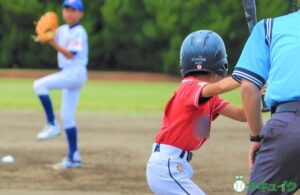
Face Helmet Rules and Guidelines
The introduction of helmets with face guards is an important measure to significantly improve player safety.
Each league has different rules and guidelines in place to ensure player safety.
Below we will explain in detail the rules for the use of face guards in each league, as well as the background and reasons for the rule changes.
Rules for using face guards in each league
Rules for the use of face-guard helmets vary from league to league, but they all share a common goal: to ensure player safety.
Major League Baseball (MLB)
In Major League Baseball (MLB), the use of helmets with face guards is recommended. Face guards are strongly encouraged, especially for batters and pitchers. In MLB, face guards have been proven effective in preventing direct hits to the face, and many players voluntarily use them. Officially, the use of helmets with face guards has increased sharply since 2018, especially among rookie and young players.
Nippon Professional Baseball (NPB)
The use of helmets with face guards is also spreading in Nippon Professional Baseball (NPB). Although there are no clear rules regarding the use of face guards in the NPB, many teams encourage players to use them from a safety perspective. Many players have started wearing face guards, especially after an accident occurred in which a ball hit them in the face. Each team respects the autonomy of the players, but also provides instruction that emphasizes safety.
Amateur Baseball
The use of helmets with face guards is also recommended in amateur baseball. In leagues with many young players, such as junior leagues and high school baseball, the use of face guards is actively encouraged to prevent injuries. Many schools and teams have adopted helmets with face guards as standard equipment, and instruction is given with the player’s safety as the first priority.
Background and reasons for the rule change
The change in the rules regarding the use of helmets with face guards stems from a strong desire to ensure the safety of players.
Below we detail the main background and reasons for the rule changes.
Increase in accidents and increased safety awareness
The main reason for the rule change was the increase in accidents involving players being hit in the face by the ball, resulting in many cases of serious injuries. In particular, direct hits to the face can have serious consequences for a player’s career, such as visual impairment and fractures. Against this background, safety awareness has increased throughout the league, and the introduction of helmets with face guards has been promoted.
Scientific Research and Data
The rule change was also driven by the accumulation of scientific studies and data proving the effectiveness of helmets with face guards. Studies have shown that face guards significantly reduce impact damage to the face, lowering the risk of injury. Based on this data, the league introduced rules encouraging the use of face guards to ensure player safety.
Technological advances and improved fit
Advances in technology have led to the development of lightweight yet highly protective helmets with face guards. This has allowed players to wear them without feeling uncomfortable while playing, and has led to the widespread use of face guards. The background to the rule change is that it is now possible to increase safety while ensuring player comfort.
For these reasons and background, the use of helmets with face guards has become recommended by each league, improving player safety.
It is expected that as technology advances, even safer equipment will continue to be developed.
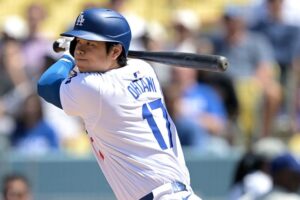
Face guard design and function
Face guards on baseball helmets are an important piece of equipment for ensuring the safety of players.
Face guards come in a wide variety of designs and functions, each with unique features suited to specific needs and situations.
Here we take a closer look at the different face guard designs and their features, as well as the materials used and their durability.
Various designs and their features
Face guard designs vary widely depending on the player’s needs and playing style.
Below are some representative designs and their features.
Full Face Guard
Full face guards are designed to cover the entire face, providing extra protection, especially to the face. This type of face guard is often used by batters and catchers. Full face guards provide full protection to the eyes, nose, and mouth, and effectively absorb the impact of a direct hit from the ball. This makes them the safest option for preventing facial injuries.
Half Face Guard
Half face guards are designed to protect the area from the mouth to the nose. Compared to full face guards that cover the entire face, they offer a wider field of vision and are easier to breathe in, making them popular with players who value comfort. They are primarily used by pitchers and infielders, and provide protection from direct impacts to the face while still allowing freedom of movement.
Side face guard
Side face guards are designed to protect one side of the face, reducing the risk of being hit directly from the side by the ball, especially when batting. This type of face guard is used by batters to protect their face against certain pitches. By only protecting one side, they provide the necessary protection while maintaining a wide field of view and a lightweight design.
Face guard material and durability
The material a face guard is made of directly impacts its durability and protective performance.
Below are some commonly used materials and their characteristics.
Polycarbonate
Polycarbonate is the most commonly used material for face guards. This material is very lightweight, yet highly resistant to impacts, providing excellent protection. It is also highly transparent, allowing for unobstructed visibility. Polycarbonate face guards are designed to be comfortable for players while they play.
Fiber Reinforced Plastics (FRP)
Fiber-reinforced plastic (FRP) is a material that is even more durable than polycarbonate. Plastics reinforced with glass or carbon fibers are extremely tough and highly resistant to impacts. FRP face guards are often used in intense play and professional matches, where they are valued for their durability and protective performance.
Metal mesh
Some face guards use metal mesh. This design allows for better visibility while preventing direct impacts to the face. Metal mesh is very sturdy and difficult to break. However, because it is made of metal, it can be heavy, so the choice depends on the player’s preference and intended use.
Silicon rubber
Silicone rubber is sometimes used in face guards that emphasize flexibility and comfort. It is highly shock-absorbent and gentle on the skin, so it is comfortable to wear for long periods of time. It is often used to balance safety and comfort, especially in junior leagues and amateur players.
As you can see, face guards come in a wide variety of designs and materials, and by understanding the characteristics of each, you can choose the most suitable one.
It is designed with player safety as a top priority, providing peace of mind while playing.

How to choose a helmet with a face guard
A helmet with a face guard is an important piece of equipment to ensure the safety of players.
However, there are a few things to consider when choosing the right helmet.
Here we will explain in detail how to choose a helmet that suits an athlete, as well as key points for maintenance and safety checks.
How to choose the right helmet for your athlete
Size Selection
It is important to choose a helmet size that fits the size of the player’s head. Choosing the right size helmet increases stability when worn and improves safety. The basis is to accurately measure the head circumference and select the size based on that. In addition, when fitting, it is necessary to check that the helmet fits securely and does not move.
Weight and balance
The weight of a helmet is an important factor in reducing fatigue during long periods of use. Choosing a helmet made of lightweight materials can reduce strain on the neck and shoulders. The balance of the helmet is also important. In particular, for helmets with face guards, it is recommended to choose one that is designed so that the weight of the face guard is not biased forward.
Scope of protection
When selecting a helmet with a face guard, it is also important to consider the extent of protection. Helmets with full face guards are suitable for players in positions where there is a high risk of injury to the face, such as batters and catchers. On the other hand, helmets with half or side face guards may be more suitable for players who prioritize visibility and ease of movement.
Material and durability
The material and durability of the helmet are also important selection criteria. Helmets made of high-quality materials can absorb impacts and last for a long time. It is recommended to choose durable materials such as polycarbonate and fiber-reinforced plastic (FRP). It is also important to check the manufacturer’s safety standards and test results to choose a reliable product.
Maintenance and safety check points
Regular maintenance
Regular maintenance is required to extend the life of your helmet and maintain your safety. After use, wipe down the surface of the helmet to remove sweat and dirt. It is also important to regularly wash the pads and liners inside the helmet to keep them hygienic.
Safety Checklist
Before using a helmet, always perform a safety check. It is important to check the following points:
- Visual inspection : Check the helmet and face guard for cracks or damage.
- Padding condition : Check that the internal padding is not worn out and is firmly attached.
- Check the fit : When you put your helmet on, make sure it fits snugly and doesn’t move around.
- Check the straps : Ensure the chinstrap and straps are tight and not damaged or worn.
Regular replacement
The protective performance of a helmet may decrease depending on frequency of use and aging. It is generally recommended to replace your helmet with a new one every few years. It is especially important to replace a helmet promptly if it has been subjected to an impact, as even if it looks fine, the internal structure may be damaged.
By taking these points into consideration, players can choose a helmet with a face guard that suits them and maintain it properly, ensuring their safety and allowing them to perform at their best.
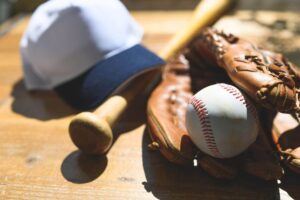
Conclusion
Helmets with face guards are an important piece of equipment to ensure the safety of players.
We hope that this article has helped you to gain a deeper understanding of the background to its introduction, its effects, and its current spread.
We hope that the use of helmets with face guards will continue to spread, further improving player safety.
